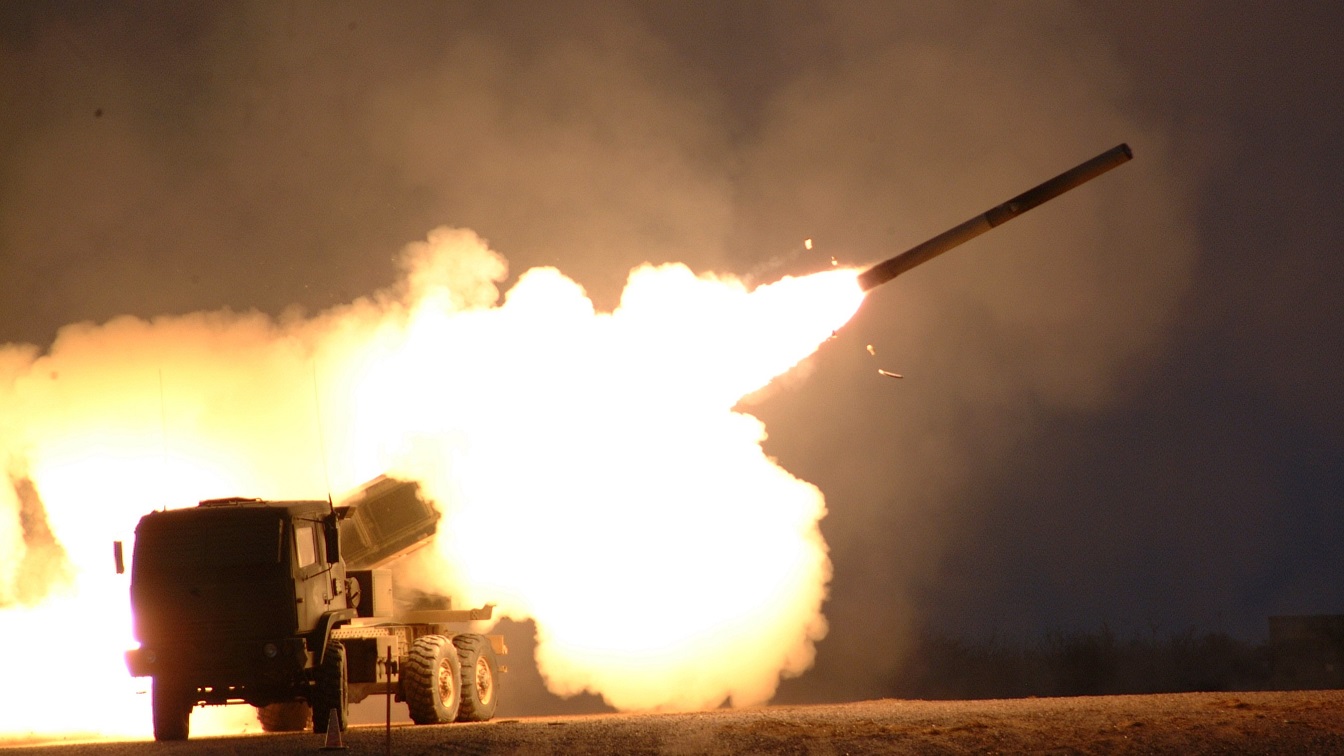Ukrainian forces allegedly launched a HIMARS strike targeting a Russian base this weekend. In a widely circulated video released by the Twitter handle @GeoConfirmed, footage of the barrage’s aftermath appears to show a completely destroyed Russian officer post.
Russian officer Oleg Marzoev announced on Telegram that three U.S.-supplied HIMARS missiles struck the facility where the Vladikavkaz garrison of the 58thArmy was positioned. A second video circulated on Twitter was captured by an officer roughly 20km from the strike. @Marzoev explained that “Two rockets that hit the building itself pierced the roof and exploded between the first and second floors, completely collapsing them in that part, folding concrete floors … At the same time, after the explosion, one of the missiles, by inertia, pierced another concrete slab into the basement, in the center of the room where three officers were at that moment, and the concrete floor of the basement itself, scattered, cut through the space with fragments of the hull, smashed walls.”
In April, the U.S. revealed details regarding a new $2.6 billion military aid package for Ukraine. Intended to support Kyiv’s defensive efforts against Russia, artillery, small arms, and ammunition for the HIMARS precision rocket systems were included. Ukrainian forces received their first shipment of these formidable long-range rockets over the summer. Since then, HIMARS has remained a critical component of Ukraine’s war operations.
A Brief Overview of HIMARS
The M142 High Mobility Artillery Rocket System is a widely revered weapon that embodies perhaps the most advanced tactical missile capabilities. First developed as a private venture by Lockheed Martin Missiles and Fire Control, HIMARS made its initial public appearance in the early 1990s.
At this point, the U.S. Army awarded Lockheed with a whopping $23 million contract to construct four rocket system prototypes. Ultimately, HIMARS was selected in 2003 and continues to serve in a significant strategic capability to its operators.
As a rocket launcher mounted on a five-ton truck, HIMARS can hold six rockets that can reach targets up to 50 miles away. Three crewmen operate the GPS-guided system. HIMARS features GMLRS rockets or one ATACM missile and can fire at roughly 94 km per hour.
For the U.S., HIMARS represents a versatile asset for the military. Its ability to be transported using C-130s, sea vessels, and other large airframes is a plus. For Ukraine, the addition of HIMARS has elevated its war efforts.
In addition to giving Ukrainian troops the element of surprise over Russia, HIMARS strikes have taken out various Russian artillery sites that limit the occupier’s counter-fire capabilities. The U.S., however, has delivered these rocket launcher systems with a caveat.
Ukrainian forces are unable to fire ATACMS long-range missiles, which could reach Russian territory.
The recent HIMARS strike that reportedly destroyed a Russian base followed a series of particularly brutal Russian attacks in recent days. On Friday, Russian air strikes killed at least 26 Ukrainians including children.
The lethal attacks included a barrage on a residential block in central Ukraine. As the uptick in warfare continues, additional shipments of HIMARS will certainly aid Kyiv’s defensive efforts.
MORE: Why Putin Fears the M1 Abrams Tank
MORE: I Went to War in the Leopard 2 Tank Ukraine Wants
Maya Carlin, a Senior Editor for 19FortyFive, is an analyst with the Center for Security Policy and a former Anna Sobol Levy Fellow at IDC Herzliya in Israel. She has by-lines in many publications, including The National Interest, Jerusalem Post, and Times of Israel. You can follow her on Twitter: @MayaCarlin.

